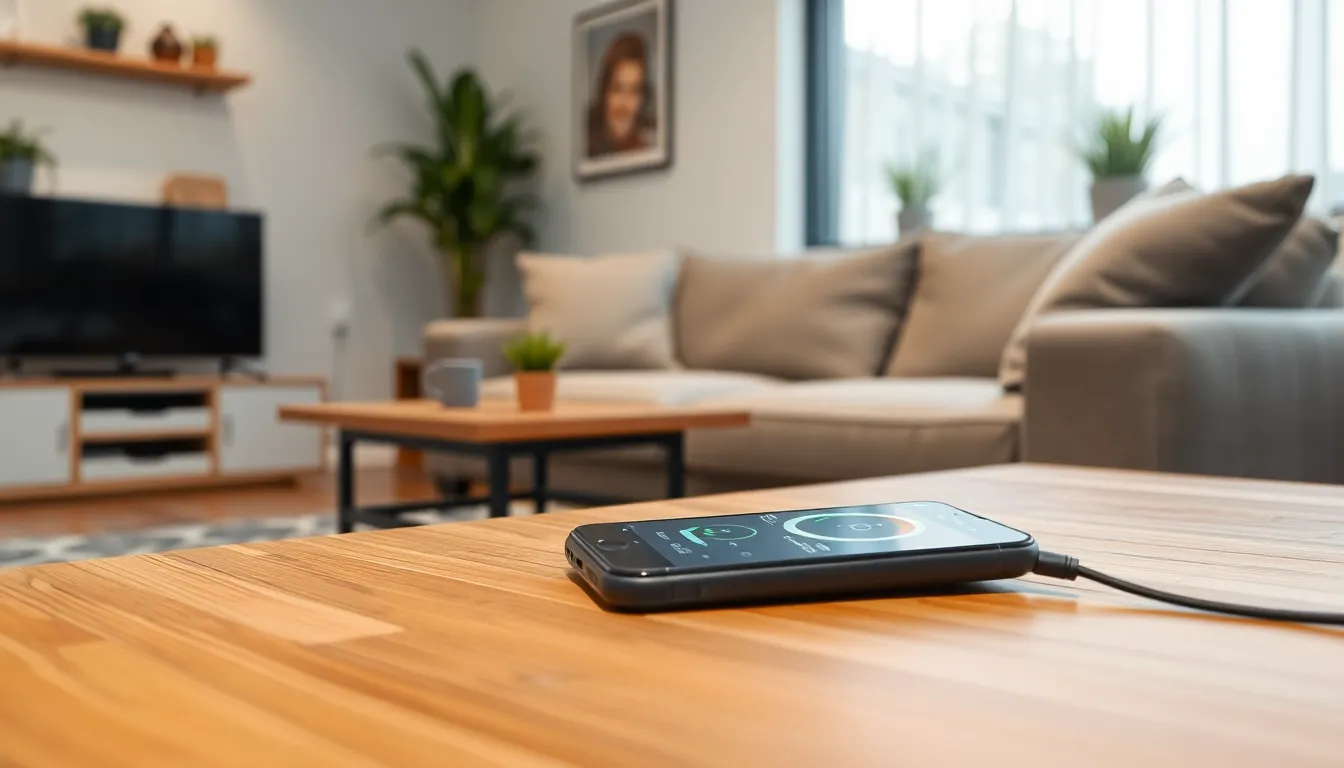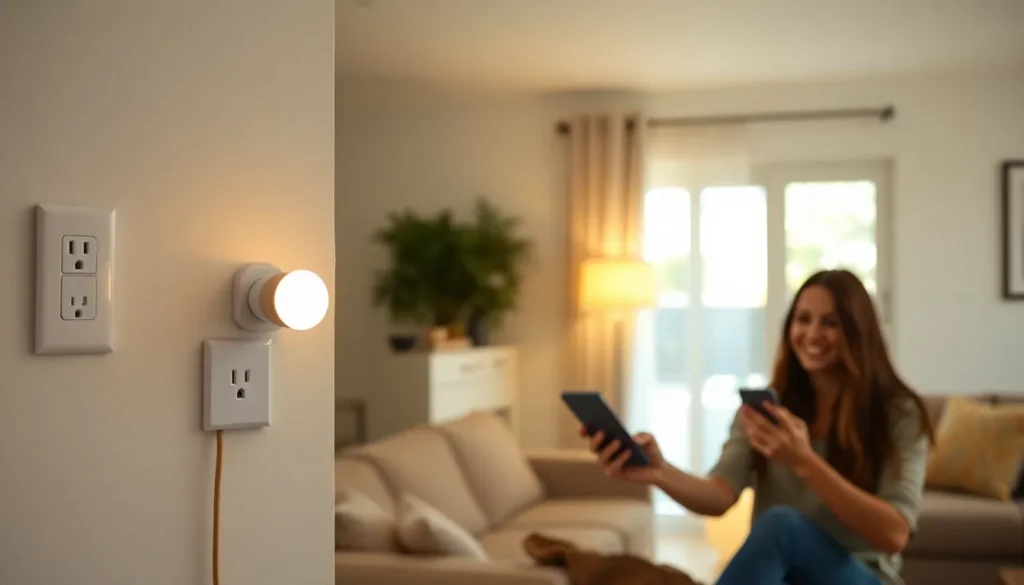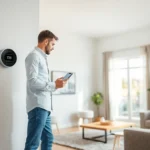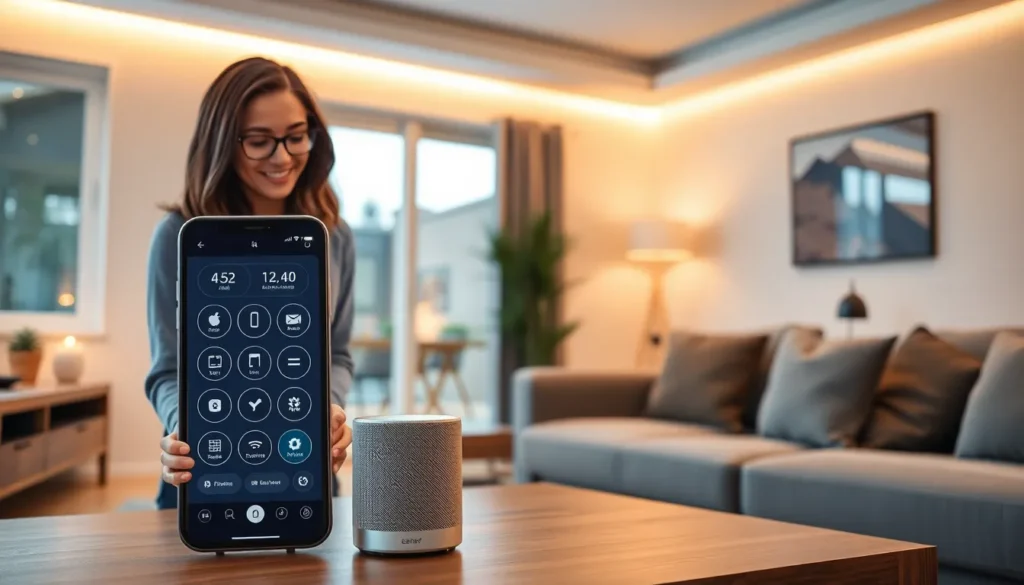Imagine walking into your home and instantly transforming it into a futuristic haven with just a tap on your smartphone. Smart home outlets are the unsung heroes of modern living, turning ordinary appliances into tech-savvy companions. They not only add convenience but also sprinkle a little magic into daily routines.
What Is a Smart Home Outlet?
A smart home outlet is a device that allows users to control their electrical appliances remotely. These outlets connect to Wi-Fi networks, enabling access through mobile apps or voice assistants. Users can turn devices on or off, set schedules, and monitor energy consumption with ease.
Smart home outlets work by transforming traditional appliances into smart devices. They often feature functionalities like energy monitoring and automatic on/off scheduling. Many outlets support integration with platforms such as Amazon Alexa, Google Assistant, and Apple HomeKit.
Installation typically involves plugging the smart outlet into an existing wall socket. Once connected, users pair the outlet with a smart device, enabling immediate control. Security features are also prevalent, ensuring that devices connected through these outlets are safe from unauthorized access.
Smart home outlets contribute to energy efficiency. Users can track energy usage in real-time, allowing them to make informed decisions about their electricity consumption. Many devices send notifications to users when energy limits exceed specified thresholds.
Various brands offer options in smart home outlets, presenting a range of features and capabilities. Some products include built-in USB ports for charging devices, while others allow multiple devices to connect simultaneously. Shoppers can find models with different price points, catering to various budgets and needs.
Smart home outlets enhance home automation by providing control over electrical appliances and offering energy monitoring. They contribute to a more efficient, secure, and convenient living space.
Benefits of Using Smart Home Outlets

Smart home outlets offer numerous advantages that enhance both convenience and efficiency. Their ability to streamline daily tasks proves beneficial to users seeking a more connected living space.
Energy Efficiency
Energy efficiency stands out as a significant advantage of smart home outlets. Users can monitor real-time energy consumption through mobile apps. Alerts notify them when energy use exceeds predefined limits, promoting responsible usage. With scheduled operations, appliances run during off-peak hours, reducing electricity costs. Estimates suggest that households can lower their energy bills by up to 30% with effective management of electrical devices. Many smart outlets include energy monitoring features, providing detailed insights into usage patterns. By integrating these devices into the home, users actively contribute to energy conservation while minimizing environmental impact.
Remote Control Capability
Remote control capability adds another layer of convenience to smart home outlets. Users can easily turn appliances on or off from anywhere using their smartphones. This functionality proves particularly useful for managing devices while away from home or for those with mobility challenges. Voice control integration with platforms like Amazon Alexa or Google Assistant enhances accessibility. Custom schedules allow users to automate their routines effortlessly. In homes with multiple devices, controlling them becomes seamless and intuitive. With options for grouping outlets, simultaneously managing several devices simplifies the setup even further. Smart home outlets empower users by providing control at their fingertips, transforming how they interact with technology.
Types of Smart Home Outlets
Smart home outlets come in various types, catering to different needs and preferences. Understanding these types helps users choose the right solution for their smart home setup.
Plug-in Outlets
Plug-in outlets provide an easy way to upgrade standard appliances. Users simply connect these outlets into existing wall sockets, allowing control over any device plugged into them. Smart features like scheduling and energy monitoring enhance convenience. Often, these outlets support compatibility with major voice assistants, enabling hands-free control. Popular options include those that integrate with platforms such as Amazon Alexa and Google Assistant. Plug-in outlets typically offer a straightforward installation process without the need for tools or professional help.
In-wall Outlets
In-wall outlets provide a more integrated solution for smart home setups. These outlets require installation within the wall, replacing traditional outlets with smart alternatives. Users benefit from a cleaner look, eliminating visible wires and plug clutter. Installation can involve electrical work, which may necessitate professional assistance for safety. In-wall outlets often support advanced features like energy usage stats and remote access. Many versions also incorporate USB ports, allowing devices to charge without adapters. These outlets suit homeowners seeking a seamless blend of technology and design.
Features to Consider
Smart home outlets come equipped with various features that enhance their functionality and user experience. Understanding these features helps users select the most appropriate option for their homes.
Compatibility with Smart Assistants
Compatibility with smart assistants is crucial for seamless integration. Many outlets work with popular platforms like Amazon Alexa, Google Assistant, and Apple HomeKit. This means users can control their devices using simple voice commands. Smart outlets that support multiple assistants provide flexibility for users with existing smart ecosystems. Integration typically requires straightforward setup through a mobile app, allowing users to enjoy hands-free control almost instantly.
Scheduling and Automation
Scheduling and automation functions elevate the convenience smart outlets offer. Users can program devices to turn on or off at specific times, aligning with their daily routines. Most outlets provide intuitive scheduling features through user-friendly apps. Automation can also extend to group control, allowing users to manage several devices simultaneously. For instance, creating a “good morning” scene can activate coffee makers and lights at once. Periodic automation reduces energy consumption and increases efficiency, particularly during peak hours.
Smart home outlets offer a remarkable way to enhance daily life by providing control and convenience at users’ fingertips. Their ability to transform ordinary appliances into smart devices not only simplifies routines but also promotes energy efficiency. With features like scheduling and energy monitoring, users can save money and reduce their environmental impact.
The variety of options available ensures that there’s a smart home outlet to fit every need, whether it’s a plug-in model for easy upgrades or a more integrated in-wall solution. By integrating with popular voice assistants, these outlets seamlessly blend into existing smart home ecosystems. Embracing smart home outlets can lead to a more efficient and connected living space, making technology work for users in ways that enhance their everyday experiences.













